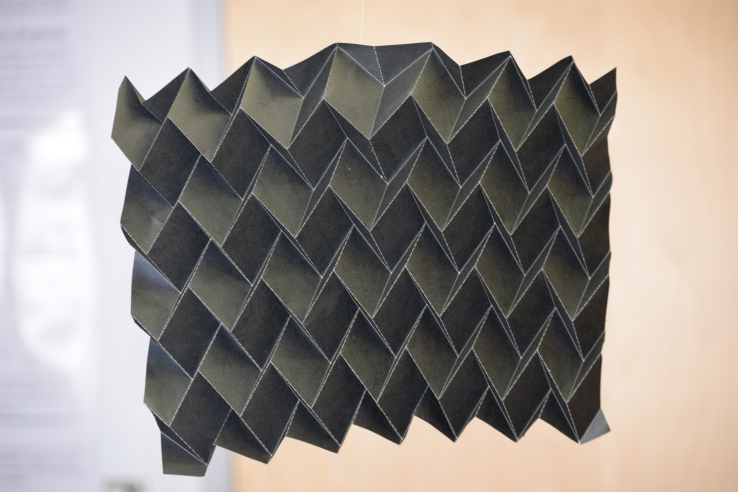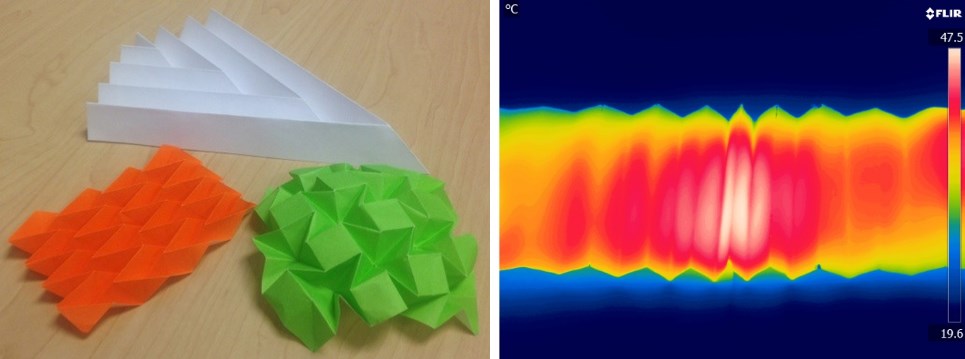

The devices we’re sending into space are getting smaller and lighter, which means there’s less room for bulky and static components. Flexibility and compactness are coming into vogue, and this prototype satellite radiator is inspired by that most compact and flexible of arts: origami.
An ordinary radiator would, of course, help dissipate heat generated by the sun or on-board electronics. But its shape and size, and therefore to a certain extent its capabilities, are set when it is manufactured.
Goddard Space Flight Center and Brigham Young University researchers are working on a radiator that can fold up or expand as needed to accelerate or slow the rate of heat dissipation as its operators see fit.
This has advantages when, for example, a satellite’s sensors work best at a certain base temperature; during the sun-baked half of its orbit, it may struggle to keep cool, while on the shadowy half, it may fall below that ideal temperature. The radiator could expand when it’s hot to lose heat quickly, and contract in the cold to prevent losing too much.

Other potential folding patterns, and a thermal image showing how heat is absorbed more in deeper folds.
The radiator (at least in one current design, a mockup of which is shown at top) is formed from a tessellating 3D pattern of diamonds. If set your mind to it, you can imagine it folding out to form a wide, flat surface, or contracting into a thick, narrow slab. It’s something like a zigzag accordion pattern, but the materials mean ordinary hand-folding isn’t an option.
BYU professor Brian Iverson and grad student Rydge Mulford of BYU designed the radiator’s shape — Iverson told me Miura Ori or Barretto Mars folds are also being considered — but its surface has a special Goddard touch.
Vivek Dwivedi and the University of Maryland’s Raymond Adomaitis are working on a brand new coating made from vanadium oxide with silver and titanium applied in atom-thin layers. The coating would transition from a semiconductor to a metal state at a seriously low temperature: 154 degrees Fahrenheit, or possibly even less. In the metal state its emissivity increases, further improving the heat-dispersion capabilities of the radiator.
It’s still early days, but between these two advances, deployed on the same design, the researchers expect to reinvent how small satellites and spacecraft keep cool or warm.
“This approach has the potential to be a game changer in thermal design,” said Dwivedi in the Goddard news release. “Our goal is to replace traditional radiators with dynamic ones, period.”

